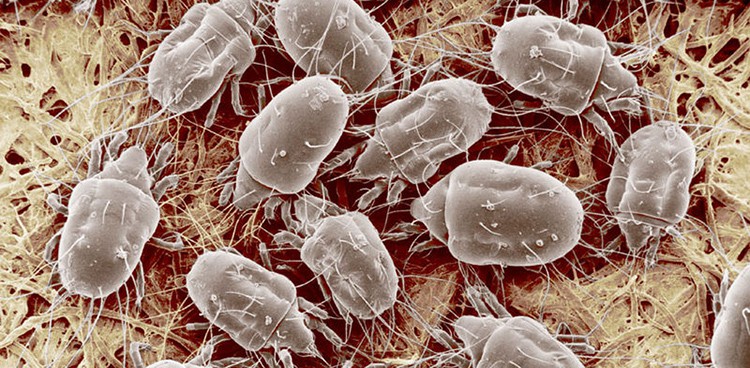
Welcome to Forbidden Fromage, a series exploring cheesy taboos and prohibitions. Intern Johnisha Levi will look at everything from navigating kosher restrictions and hip hop MCs’ use of cheese and dairy as metaphors for illicit profit and sex to the paleo diet’s dairy prohibition. You’ll get a little history, religion, pop culture, science, and medicine along the way, as we cover thousands of years in the blink of some blog posts.
This week’s Forbidden Fromage is all about arthropods: those maggots and mites who—in addition to creeping, crawling, and leaping—are enormously instrumental in the cheesemaking process and cause for some cheesy legal prohibitions.
Maggots and Casu Marzu
Let’s start with the infamous casu marzu, which is Sardinian for “rotten cheese” but in these parts is probably better known as “that maggot cheese.” You know, the one Andrew Zimmern ate on Bizarre Foods? Casu marzu begins life as a sheep’s milk cheese that we’re all familiar (and I daresay more comfortable) with: pecorino. The top of the cheese gets cut off, and the rest is stored in a a dark, cool hut so that cheese flies (Piophilla casei) can find a cozy place to lay their eggs. Once the resultant larvae hatch, they get to work by digesting the fat in the cheese, which causes it to not only soften but to seep a bit. (In Sardinian, this effect is referred to as lagrima, which means “tear.”). But that’s not the end of life as you know it for the larvae. Tradition dictates eating this cheese when the maggots are alive and (literally) “jumping” (the larvae are known as “cheese skippers” because they have the ability to leap six inches!)
For a time, the European Union banned casu marzu, although I’m sure it had its black market adherents during these dark days. Eventually, the EU lightened up, and it lifted the ban as part of an exemption for traditional foods. It is now rumored that the University of Sassari is working on ways to make a “more hygienic” version of the cheese, but that begs the question: Will such a means of production still yield the “ammoniated” taste with the animated, interactive eating experience that have been the hallmarks of traditional casu marzu for several generations? I have a hard time believing that there is any substitute for the real thing. If the Sardinians who enjoy this cheese are willing to take the intestinal risk, then I say let them have their live cheese skippers! For a closer look at what it take to make casu marzu, check out this great segment on Gordon Ramsay’s The F-Word:
Mites and Milbenkäse
We’ve covered maggots, so what about mites? These microscopic critters certainly don’t have the visibility (or, let’s be real, the visceral factor) of maggots wriggling in your food, but they are virtually synonymous with cheese: “mite” was even an old slang word for cheesemonger. Cheese mites are also the subject of the first popular science documentary, creatively entitled “Cheese Mites” (1903). An audience at London’s Leicester Square was treated to the minute-long footage of a man who takes a magnifying glass to his Stilton sandwich and is horrified by what he spies. The footage resulted in a surge of cheap microscope sales, which came with test slides of mites:
Milbenkäse dates from the Middle Ages, but the cheese was pretty much extinct until an enterprising retired science teacher from the village of Würchwitz, Helmut Pöschel, decided to revive it. Milbenkäse starts off as a low fat quark made from goat’s, sheep’s, or cow’s milk that is seasoned with salt and caraway. The cheese is dried and then formed into cylinders, balls, or wheels that are layered in special boxes along with cheese mites and rye flour. The flour helps to feed the mites so that they don’t completely devour the cheese. The digestive enzymes of the mites ferment the cheese for the next four to six months. Pöschel finds that 100% humidity is optimal for the cheese and its frenzied feeders. As the cheese ages, it undergoes dramatic color changes, moving from yellow to reddish brown (and somtimes black). What emerges from the boxes is a cheese that some compare to the sour milk cheese Harzer and others have likened to a spicy Limburger.
Pöschel has become so taken with Milbenkäse that he even opened a museum for the cheese back in 2005, complete with an (inedible) cheese sample that is allegedly hundreds of years old. There’s also a huge cheese mite memorial, behind which tourists can find samples of Pöschel’s cheese to try. Sounds like a culture field trip in the making to me!
So now that you have gotten your fill of the critters used to create some distinctive cheeses, next week, Forbidden Fromage will be taking a look at cheese as a migraine trigger/toxin.



